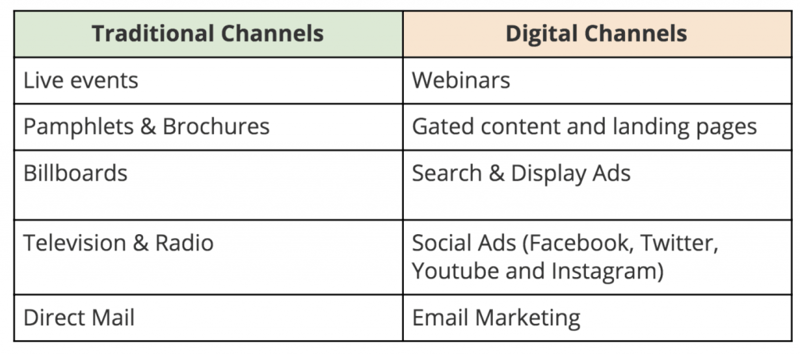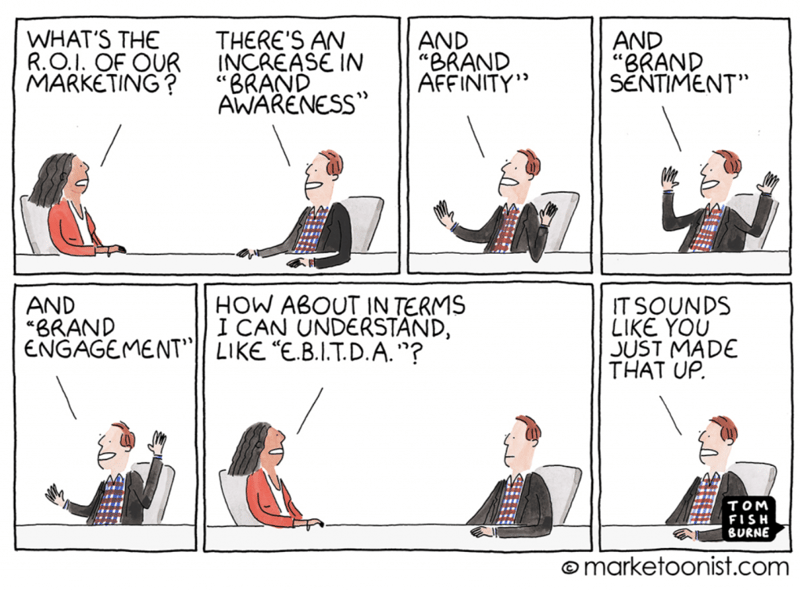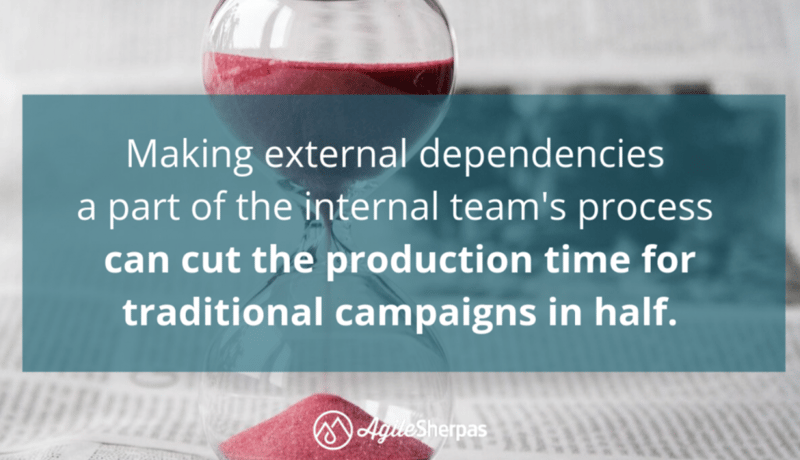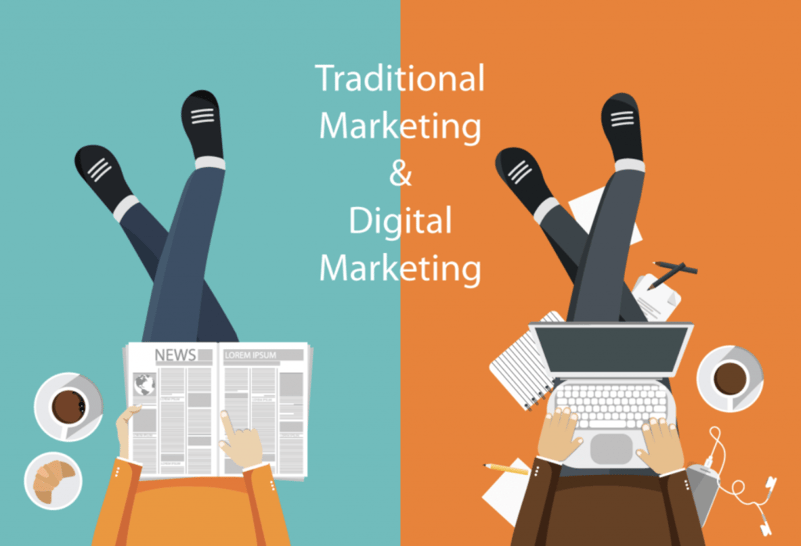Improve your Marketing Ops every week
Subscribe to our blog to get insights sent directly to your inbox.
Confront your process problems head on with a Sherpa by your side.
Explore support options that are tailored to meet you wherever you are on your climb.
Browse our pioneering Agile marketing courses
Learn from the stories of marketers already on the road to process improvement.
Featured Resource

State of Agile Marketing
Learn from 8 years of study on how marketers are increasing their agility.
Download Report
Imagine a single day in the life of your customer. In the highly digital, highly connected world most humans inhabit, much of what you’re imagining includes an electronic device of some kind. When people are online they can easily interact with your business’ digital content.
Our digital marketing campaigns are dedicated to getting customers’ attention when they have access to the online world. But as technology becomes ever more ubiquitous, sometimes a non-digital touch point is the ideal way to create a memorable marketing moment. This is where, we can make the argument, traditional marketing campaigns have a better chance of getting a customer’s attention. In these cases, do we abandon our efforts at agility?
In the wider discussion around Agile marketing, “traditional marketing” often gets a bad rap. Because of the failings of the traditional marketing process, traditional marketing channels themselves are considered impossible to measure, expensive to use, and difficult to iterate upon.
The general consensus is that these qualities do not make traditional marketing conducive to an Agile marketing workflow. However, with the right tools in place, traditional marketing channels can be managed and improved upon in an Agile way.
First, it’s important to make the distinction between which channels qualify as digital and which are considered traditional. In this article, when I talk about traditional channels, I’m talking about marketing that does not happen online. To give you an idea of what I mean, here are a number of traditional channels and their digital equivalents. 
Already, we have some obvious parallels.
It’s a common misconception that all traditional marketing channels are in service of Big Bang campaigns (and therefore not Agile) that will end up failing. But, deciding what is worth it and what is wasteful is all relative.
There are companies that spend +$1M a month on Google and Facebook advertising, while others pay $50k for a TV spot that runs for a full six months. It’s all about conversion rate and ROI. Return on Investment is the primary measure of progress, and not just in the Agile marketing world.
Being able to measure and increase ROI to improve the output of a traditional marketing channel makes it possible to make data-driven optimization decisions, just as you would in a digital channel.
For example, many businesses launch expensive billboard campaigns with the goal of “brand awareness.” Beware brand awareness. It’s extremely difficult to measure and may not translate directly into paying customers. (Hypothetically, an entire city can be aware of your brand without having any intention to pay for your product.)
Where does that leave us? With a bad impression of billboards in general. But, if a billboard is able to bring in sales worth double its cost, doesn’t that make it a lucrative marketing channel?
Measurability in traditional channels is the key to unlocking agility. Being able to trace actual sales back to a billboard for the business means the marketing team is armed with real data to make better decisions and optimize.
Tip: Isolating your billboard from other offers you are currently running by adding a unique link, QR or promo code to it can give you a whole lot of information about the types of people that respond to it specifically. Information like this helps your marketing team determine ROI and create experiments that move the needle towards greater marketing success.
With traditional channels, it’s more difficult to work independently. These dependencies slow the process of production down. They also affect the ability to iterate as quickly as we can with digital campaigns.
For example, when launching a digital marketing campaign, a single person with the right skillset could complete almost all the necessary work. They really only depend on:
On the other hand, launching a traditional campaign depends on external factors outside of our control that slow the process down. For example, when launching a product using traditional channels, a marketer may also need:
Luckily, Agile marketing accounts for external dependencies and offers ways to integrate them seamlessly into our internal processes. In the example above, this may mean carefully choosing a consistent partner who understands the internal team’s process of iteration. Creating touchpoints of communication with our external dependencies is also key. If they have greater visibility into our own internal activities, they can provide feedback throughout the process. Making external dependencies as much a part of the process of the internal team as possible can cut the production time for traditional campaigns in half.
Once a customer visits a landing page or clicks on an ad in the margins of their favorite social network (and doesn’t act on the CTA), it’s really difficult to get them to go back to reconsider. In digital campaigns, the process of getting a potential customer to return often requires its own ad budget and is referred to as “remarketing.”
With physical marketing materials, the ability to take a piece of marketing home can be a very powerful thing. The tactile element of a brochure or pamphlet allows the potential customer to browse through the material over and over again. If the Rule of 7 really works, then physical marketing materials may actually be a cheaper way to appear in your potential customer’s field of vision more than just once.
When creating physical materials using an Agile approach, make sure to measure their marketing success using a unique promo code or other offer that links dollars back to their source. This measurability allows you to optimize and adapt the copy and design in future versions of pamphlets or brochures.
If the gap between digital and traditional channels seems vast at the moment, soon, it probably won’t exist.

Image from Divya Bhardwaj on Medium
Digital can help us learn more about how our traditional marketing channels are working (or not working). For example, check out these Smart billboards. Are they digital or traditional? It can be argued that they’re both. They’re using digital elements to collect information about our customers through a traditional medium. From the perspective of the customer, this is just a common billboard (that is surprisingly relevant to him/her!). From the marketers’ perspective, this is a traditional channel that collects data digitally. This helps them provide a better customer experience.
With the tenets of measurability, transparency, and continuous improvement in place, any marketing campaign can be run in an Agile way. Admittedly, digital campaigns are likely to already have the tools in place to make every aspect of our customers’ behaviour measurable. With traditional marketing, we might have to get more creative about how we collect our data. As long as we find a way to put our customers at the center of the work we do, we’re already well on our way to marketing agility -- digital or otherwise. Have you run an Agile marketing campaign using traditional channels? Which Agile principles and practices were you able to apply in order to listen, learn and adapt? Let us know in the comments below.
Subscribe to our blog to get insights sent directly to your inbox.
Subscribe to our blog to get insights sent directly to your inbox.